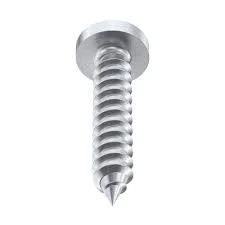m16 concrete anchor
Understanding M16 Concrete Anchors Essential Features and Applications
Concrete anchors are crucial components in construction and engineering, providing strength and stability to various structures. Among different types of anchors, the M16 concrete anchor is notable for its versatility and robustness, making it a popular choice in a range of applications. In this article, we'll explore the unique features of the M16 concrete anchor, its typical uses, installation methods, and considerations for selecting the right type for your project.
What is an M16 Concrete Anchor?
The designation M16 refers to the metric dimension of the anchor, where M stands for metric and 16 indicates a nominal diameter of 16 millimeters. This diameter is essential as it determines the compatibility of the anchor with the fixtures it is meant to hold. M16 anchors can come in various types, including wedge anchors, sleeve anchors, and chemical anchors, each designed for specific load requirements and conditions.
Key Features of M16 Concrete Anchors
1. Load Capacity M16 anchors generally provide substantial load-bearing capabilities, making them suitable for heavy-duty applications. The exact load capacity can vary depending on the type of anchor and the concrete quality.
2. Material Composition These anchors are typically made from high-strength steel or stainless steel, ensuring durability and resistance to corrosion, especially in outdoor or humid environments.
3. Versatility M16 concrete anchors can secure everything from light fixtures to heavy machinery, making them a valuable asset in both residential and commercial projects.
4. Ease of Installation Most M16 anchors are designed for straightforward installation, requiring only standard drilling and fastening tools.
m16 concrete anchor

Common Applications
M16 concrete anchors are utilized in various settings, including
- Structural Support Essential for securing beams, columns, and frames in buildings and bridges. - Anchoring Equipment Used to fasten machinery, racks, and shelves in warehouses and manufacturing facilities. - Construction Projects Ideal for attaching electrical and plumbing fixtures to concrete walls. - Outdoor Installations Perfect for anchoring fences, playgrounds, and other outdoor structures.
Installation Considerations
Proper installation is critical for the performance of M16 concrete anchors. Here are a few key points to consider
- Drilling the Hole Ensure that the hole diameter and depth are compatible with the M16 anchor specifications. This might require specific drilling equipment designed for concrete. - Clean the Hole Before inserting the anchor, clean the hole of dust and debris to ensure a secure bond.
- Follow Load Specifications Always refer to the manufacturer’s guidelines for load capacities and recommendations based on the type of anchor used and the concrete’s compressive strength.
Conclusion
M16 concrete anchors are reliable, versatile, and essential tools in construction and engineering. Their ability to provide strong and stable connections makes them suitable for a variety of applications, from residential projects to heavy industrial uses. When considering an M16 concrete anchor for your next project, make sure to evaluate your specific needs, installation methods, and the environmental factors that may affect anchor performance. By choosing the right anchors and installing them correctly, you can ensure that your structures remain safe and durable for years to come.
-
Weatherproof Plastic Expansion Anchors for OutdoorNewsJun.06,2025
-
Sustainability in the Supply Chain: Eco-Friendly TEK Screws ProductionNewsJun.06,2025
-
Load-Bearing Capacity of External Insulation FixingsNewsJun.06,2025
-
Double Head Bolts: Enhancing Efficiency in Industrial MachineryNewsJun.06,2025
-
Corrosion Resistance in Chipboard Screws: Coatings for Wholesale DurabilityNewsJun.06,2025
-
Butterfly Toggle Bolts : Enhancing Structural ResilienceNewsJun.06,2025
